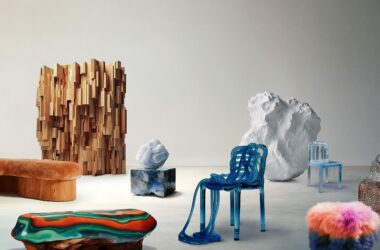Influenced by social evolution and technological advances, the work scape today is ever-changing. With these dynamic shifts, it is now a more exciting time for space planners and designers to come up with innovative solutions in today’s workplaces of the future.
Applications of sensory design elements, smartphone-controlled systems, and advanced architectural materials are popular innovations that the typical office environment will soon enjoy.
We are looking ahead to smart, vibrant, green, and flexible offices in the future. We are starting to get a glimpse of how all of these features will come together seamlessly in the future.
We’ve come up with 5 Trends in Office Interior Design.
- Resimercial (Residential and Commercial)
If you haven’t yet picked up this neologism then you are in for a treat. Coined from the architectural industry as a term for bridging residential and commercial architecture. It also applies to the furniture industry and interior design.
Sleep pods are one of the best examples of resimercial concepts and added with household amenities and potted plants you’ll indeed feel more relaxed just ready to tap up that creative mind.
For materials, organic textures such as bricks and wood are integrated with concrete and glass, creating a more welcoming office atmosphere. Corduroy and velvet are also making a comeback, as seen in its reintroduction in furniture in recent years.
- Interactive Interiors
Employees can kick off those dozy hours with fun and engaging media walls. These tactile features can be installed along the office hallways, lounge area, and pantry rooms.
Multi-touch interactive screens can replace our traditional projectors, making board meetings livelier, and are said to bring better retention among participants.
To break up the rigidity of office spaces, we’ll see the continued use of organic curves, as the 80s curves have started to reemerge in domestic interiors.
- Biophilic and Sustainable Design
Both movements will become a staple in many office interiors. Biophilic design is where reconnecting occupants with nature is the major theme. We’ll see live trees and plants fully integrated into the built spaces.
Vertical gardens and green feature walls can light up offices with limited natural lighting and ventilation. These green walls can also reduce noise and offers benefits to the general well-being of workers.
For sustainability, companies will continue to explore energy-saving mechanisms. LED lights, recycled building materials, and organic furniture are other architectural elements that will continue through future offices.
- Integration of Arts and Tech
We’ll see more beautifully crafted décor and architectural elements with technological integration in our future offices. Our office design elements need not be all cold and mechanical-looking. Wood, faux fur, and a touch of craftsmanship can further add warmth to our office interiors.
The HYDE Wall and Ceiling System by KOVR is an example of the successful integration of craftsmanship and technology. The HYDE wall combines the 12mm thick tiles with LED lights integrated seamlessly without exposed wiring.
Another beautifully crafted hi-tech piece is the Swarovski Infinite Aura Lighting with its enchanting design and adjustable lighting and temperature features. The exquisite luminaire even comes with its own mobile application.
- Variety and Flexibility
Creating varied spaces that can adapt to changes, is a foreseen standard in future offices.
To define and enhance these spaces color and light have a large part in the functioning of future offices. We see the timeless cobalt blue and black hues to stay in sophisticated spaces and the all-white with glass and chrome surfaces to be common in collaborative areas.
In addition, the office nooks such as spaces under stairs and other unused spaces will also be utilized as space planners will need to integrate a variety of functional spaces.
Efficiency and productivity have always been the main concerns of companies but as the knowledge of productivity-environment correlation has spanned, we are now optimistic to see dynamism and vibrancy into the future of occupied spaces. With innovative design ideas emerging, we’re optimistic that the office space of the future seems brighter than ever.






